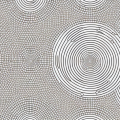The unit circle is a vital concept in trigonometry, originally used to measure angles and calculate distances in two dimension planes. This mathematical tool is an invaluable resource in higher mathematics and sciences like physics, engineering, and computer science. It also has many everyday applications. In this article, we will look at the structure of the filled out unit circle, and explore some of its uses and applications.
What is the Unit Circle?
The unit circle is a circle with a radius of 1, centered at the origin of a Cartesian coordinate system. On the unit circle are points lying along the circumference that are used to measure and calculate values related to circular functions like sine, cosine, and tangent. Each point on the circumference of the unit circle is identified by its polar coordinates, consisting of an angle and its associated length. In the simplest form of the unit circle, only the angles are plotted and labeled, while the lengths are left out. A filled out unit circle would include labels that represent specific numerical values associated with each angle.
Exploring the Structure of the Unit Circle
The structure of the filled out unit circle is very similar to the basic version of the circle. It is still centered on the origin, with a radius of 1. The major difference between them is that the filled out unit circle has numerical values associated with each point on the circumference. These values represent lengths, which can be used to calculate various characteristics related to an angle. Since the length of the radius is known, these numerical values can be calculated in relation to the angle for any point on the circumference.
Identifying Key Points on the Unit Circle
There are several points on the circumference of the unit circle that are important to understand. The four points that lie at 0° (also called 0 radians), 90° (1.5708 radians), 180° (3.1416 radians), and 270° (4.7124 radians) represent π/2, π, 3π/2 and 2π respectively. These points form the right angles needed for understanding how angles work. Additionally, the two points that lie along the x-axis at 0° (also called 0 radians) and 180° (3.1416 radians) represent y = 0 and y = -1 respectively.
Memorizing Values Around the Unit Circle
In order to better understand the filled out unit circle, it is important to know some of the numerical values associated with each point on the circumference. The most frequently used values are those associated with the four points at 0° (0 radians), 90° (1.5708 radians), 180° (3.1416 radians) and 270° (4.7124 radians). These are: sin 0° = 0, cos 0° = 1, sin 90° = 1, cos 90° = 0, sin 180° = 0, cos 180° = -1, sin 270° = -1, and cos 270° = 0. Additionally, the points at 35° (0.6115 radians)and 145° (2.505 radians) represent respectively.
Using Trigonometry to Visualize the Unit Circle
One of the most useful ways of understanding a filled out unit circle is through trigonometry. Each point on the circumference can be used to create a right triangle to calculate and visualize how angles work in relation to the values on the unit circle. For example, if you wanted to know what y = 1/2 would look like graphically on a unit circle, you could use trigonometry to draw a 45° angle from one of the four points at 0° (0 radians), 90° (1.5708 radians), 180° (3.1416 radians) and 270° (4.7124 radians) along with its corresponding length of 0.866025. This would reveal a representation of y = 1/2 on the unit circle.
Understanding Radians and Degrees on the Unit Circle
The unit circle is typically labeled in both radians and degrees, depending on your preference or need. Both represent a way of measuring angles, however they use different units to represent them. Degrees use smaller units of measure while radians are typically measured with larger units. For example, one degree is equal to approximately 0.01745329 radians while one radian is equal to approximately 57.2957795 degrees.
Calculating Values on the Unit Circle
Using the numerical values associated with individual points on the circumference of the unit circle, it is possible to calculate a variety of functions related to angles. Known as “selecting points” in trigonometry, these functions allow you to identify certain characteristics related to an angle such as its length or the coordinates of a point that lies at a certain angle from the origin.
Common Applications of the Filled Out Unit Circle
The filled out unit circle has many everyday applications and can be found in fields such as engineering and finance. In architecture or construction, for example, knowing how to measure angles accurately is vital in making sure structures stay upright and level over time. In finance, it can be used to calculate changes in compound interest rates over time or track stock prices in relation to market trends. Additionally, knowledge of the filled out unit circle can be a helpful tool for more complex topics such as vector analysis or 3D graphics.
Understanding how to use a filled out unit circle is an essential skill for anyone studying mathematics at higher levels. It offers an invaluable basis for exploring more complex topics such as trigonometry, calculus and statistics. Through careful study and mastery of this concept, students open themselves up to countless possibilities in mathematics that can be applied to a variety of settings.





